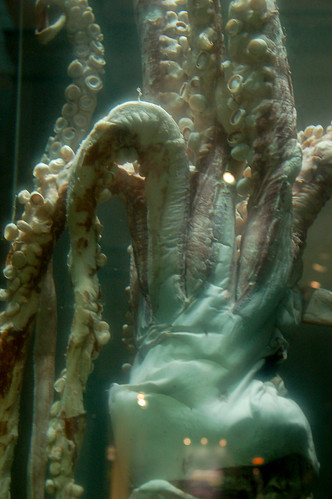Another feature is the Universal News Search and the Universal Blog Search. I pre-set my universal news search to "natural history museum" and my universal blog search to "curiosity cabinet, wunderkammer". These were a little bit difficult to utilize properly for my topic, as the history of natural history museums is not exactly a big news item. Also, in order to obtain relevant blog posts I had to get pretty specific in the search terms. However, I think that by using them together and inputting a different search term in each, I should get some relevant information. For instance, I found out about the incredible "Wunderkammer at the MoMA" exhibit which unfortunately closed last year (If only I had known!), through the blog search. The news search gets some pretty random results; currently it's showing a home and garden calendar for Asheville, NC, along with an article called "Tales from 17th Century Graves" (definitely the more interesting of the two). I don't anticipate that these two widgets will actually help with my research, but they should make for some distracting reads.
Among the "Interesting website" flakes I've included are the Museum of the History of Science, "Brought to Life" (the Science Museum's History of Medicine website), and an RSS feed for Seed magazine. I chose the first two because a) they are really cool, and b) because the history of science and medicine is closely related to, and an integral part of, the history of natural history museums. Seed magazine is an excellent modern science magazine that has a broad appeal to people who are curious about the world, hence its obvious relationship to the subject of curiosity.
The rest of the content is mostly RSS feeds from blogs, many of which I have either mentioned in previous posts or list in my blogroll. This allows me to keep up with all the new posts, all on one web page. To me, this is the best part of my pageflake; without being able to easily peruse all of my blogs on one page, I might have missed this:

Preserved Giant Squid, Smithsonian Institution. Photograph courtesy of Curious Expeditions.
I also get all the latest updates from Bioephemera, which is one of my favorite blogs, such as this article which led me to the "Brought to Life" website. (Not to mention the useful post on how to mail human blood.) I can learn about current projects people are working on, such as Morbid Anatomy's call for private collections for a photographic exhibit, and curiosity cabinet-related events or gatherings (most of which seem to be in New York or London, unfortunately for me.)
While most of the information I've compiled on my Pageflake is definitely pertinent to my topic, most of it is more entertaining than it is academic. I've found that books are still the best source of scholarly information about the history of museums, but we all need a distraction from our serious work now and then. And what's more entertaining than a giant preserved squid?




No comments:
Post a Comment